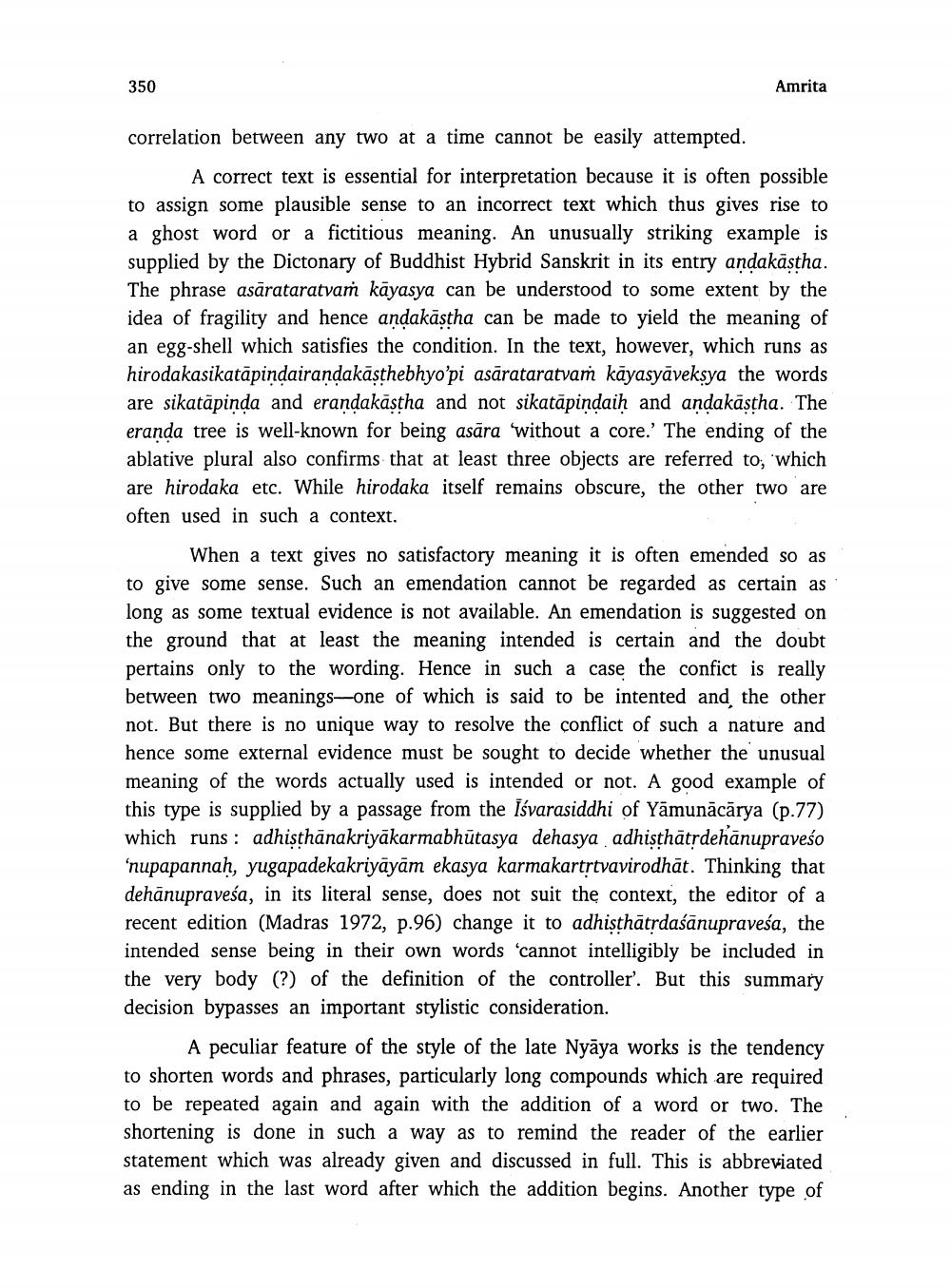________________
350
Amrita
correlation between any two at a time cannot be easily attempted.
A correct text is essential for interpretation because it is often possible to assign some plausible sense to an incorrect text which thus gives rise to a ghost word or a fictitious meaning. An unusually striking example is supplied by the Dictonary of Buddhist Hybrid Sanskrit in its entry andakāstha. The phrase asarataratvaṁ kāyasya can be understood to some extent by the idea of fragility and hence anḍakāṣṭha can be made to yield the meaning of an egg-shell which satisfies the condition. In the text, however, which runs as hirodakasikatäpindairandakästhebhyo'pi asärataratvam kayasyävekṣya the words are sikatäpinda and erandakaṣṭha and not sikatäpinḍaiḥ and andakaṣṭha. The eranda tree is well-known for being asara 'without a core.' The ending of the ablative plural also confirms that at least three objects are referred to, which are hirodaka etc. While hirodaka itself remains obscure, the other two are often used in such a context.
When a text gives no satisfactory meaning it is often emended so as to give some sense. Such an emendation cannot be regarded as certain as long as some textual evidence is not available. An emendation is suggested on the ground that at least the meaning intended is certain and the doubt pertains only to the wording. Hence in such a case the confict is really between two meanings-one of which is said to be intented and, the other not. But there is no unique way to resolve the conflict of such a nature and hence some external evidence must be sought to decide whether the unusual meaning of the words actually used is intended or not. A good example of this type is supplied by a passage from the Isvarasiddhi of Yamunācārya (p.77) which runs adhiṣṭhānakriyäkarmabhūtasya dehasya adhisthätṛdehanupraveśo 'nupapannaḥ, yugapadekakriyāyām ekasya karmakartṛtvavirodhät. Thinking that dehanupravesa, in its literal sense, does not suit the context, the editor of at recent edition (Madras 1972, p.96) change it to adhiṣṭhātrdaśānupravesa, the intended sense being in their own words 'cannot intelligibly be included in the very body (?) of the definition of the controller'. But this summary decision bypasses an important stylistic consideration.
A peculiar feature of the style of the late Nyaya works is the tendency to shorten words and phrases, particularly long compounds which are required to be repeated again and again with the addition of a word or two. The shortening is done in such a way as to remind the reader of the earlier statement which was already given and discussed in full. This is abbreviated as ending in the last word after which the addition begins. Another type of




